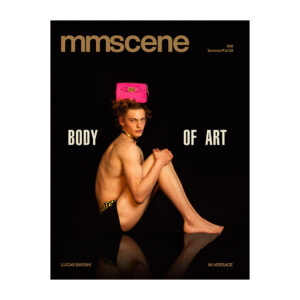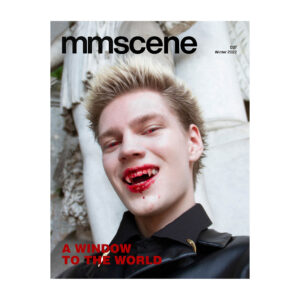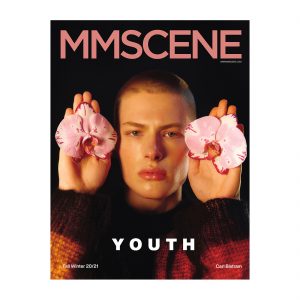
The neckerchief, a staple accessory in 2024, has a history as fascinating as its many uses. From ancient times to the modern runway, this versatile piece of fabric has found its way into various cultures, uniforms, and fashion statements. While it may seem like a simple accessory, the neckerchief has played numerous roles, ranging from a practical tool to a symbol of style and status. This article explores rich history of the neckerchief, tracing its journey from ancient civilizations to its place in contemporary fashion.
From Ancient Functionality to Military Prestige
The origins of the neckerchief can be traced back to ancient civilizations. In Egypt, China, and Rome, squares of cloth similar to the modern neckerchief were used for their practicality. They shielded the neck from harsh weather conditions, protected against the sun’s rays, kept the cold at bay, and served as convenient towels for wiping the brow. These functional pieces were often made from locally available materials, making them a common sight among laborers, soldiers, and travelers. Over time, what started as a practical necessity began to transform into a symbol of status.
As societies evolved, so did the neckerchief’s role. It became a notable feature in military attire, especially during the 17th and 18th centuries. Soldiers and officers alike donned neckerchiefs as part of their uniforms, using them to signify rank and allegiance. Higher-ranking officers, eager to distinguish themselves, embellished their neckerchiefs with fine fabrics, embroidery, and other decorative elements. This tradition of using neckerchiefs to denote rank and status soon extended beyond the military, influencing civilian fashion and becoming a statement piece for men and women alike.

Royal Recognition and Cultural Significance
The neckerchief’s journey into the world of the prestigious and iconic was significantly marked by its adoption in royal circles. During the Boer War in the late 19th and early 20th centuries, Queen Victoria used neckerchiefs to honor distinguished soldiers. These scarves, often made from fine silk, were tokens of valor and bravery. Their use in such a context elevated the neckerchief from accessory to a symbol of honor.
The influence of the neckerchief extended into the cultural sphere, becoming a feature in literature and popular fashion. It was during this era that Oscar Wilde famously remarked, “A well-tied tie is the first serious step in life,” highlighting the importance of neckwear in making a sartorial statement. Neckerchiefs became a way for men to express their individuality and sophistication, often paired with tailored suits and other fashionable attire of the time.
Sailors, Scouts, and the Neckerchief’s Multifaceted Roles
While the neckerchief became popular in military and royal circles, its use in the navy and scouting movements further secured its place in history. Sailors adopted the neckerchief as part of their uniform for both practical and stylistic reasons. Originally, sailors wore neckerchiefs to protect their collars from the grease of their braided pigtails, a common hairstyle at the time. Even as these hairstyles fell out of favor, the neckerchief remained a staple of naval attire, symbolizing the fusion of functionality and fashion that defines great accessories.
In the early 1900s, the neckerchief gained iconic status within the scouting movement. Robert Baden-Powell, the founder of the Boy Scouts, introduced the neckerchief as a key element of the scout uniform. True to its history, the neckerchief served dual purposes. It symbolized unity and camaraderie among scouts and could also be used in practical situations, such as a makeshift bandage, a sling, or even a water filter in emergencies. This adaptability made the neckerchief a symbol of resourcefulness, a core value of the scouting movement. Today, while its practical uses may not be as common, the neckerchief remains an enduring part of scouting tradition.

Neckerchiefs in Modern Fashion: A Timeless Accessory
Despite its historical roots, the neckerchief has easily transitioned into a modern fashion staple. Today, it is prized primarily for its aesthetic appeal, offering a subtle nod to its rich past while complementing contemporary styles. Fashion designers and enthusiasts have embraced the neckerchief for its versatility, incorporating it into both casual and formal outfits. Its ability to adapt to different fashion trends and personal styles makes it a favorite accessory for those looking to add a touch of elegance and individuality to their look.
How to Style the Neckerchief Today
The beauty of the neckerchief lies in its versatility. Here are a few ways to incorporate this timeless accessory into your wardrobe:
- The Simple Knot: Perfect for casual or less formal outfits, simply fold your neckerchief into a triangle (a silk one such as these from Elizabetta would work well). Gently roll it and finish the look with a simple knot tied at the front.
- The Loose Drape: For a more relaxed and effortless vibe, drape the neckerchief around your neck without tying a knot, letting the ends hang loosely. This style pairs perfectly with an open-collared shirt, creating an easy-going yet stylish appearance suitable for casual outings and weekend wear.
- The Bandana Style: Neckerchiefs are not just for formal occasions. To achieve a laid-back, festival-ready look, fold the neckerchief into a triangle and tie it at the back of your neck, allowing the point to fall forward like a bandana. This style is perfect for casual events like summer barbecues, music festivals, or beach outings, offering a stylish and practical way to stay cool.
Throughout its long and illustrious history, the neckerchief has adapted to various roles and styles, reflecting the changing needs and tastes of society. From ancient practicalities to symbols of honor and fashion statements, the neckerchief has proven itself as more than just a piece of cloth. Its enduring appeal lies in its ability to blend function with style, making it a timeless accessory that continues to captivate fashion enthusiasts. Whether worn for its historical significance or as a modern fashion statement, the neckerchief remains a versatile and beloved part of men’s fashion. Embrace the heritage and endless possibilities of this unique accessory, and find your own way to incorporate it into your personal style.
Images from Undisclosed by Inês Santos – see full article here.








